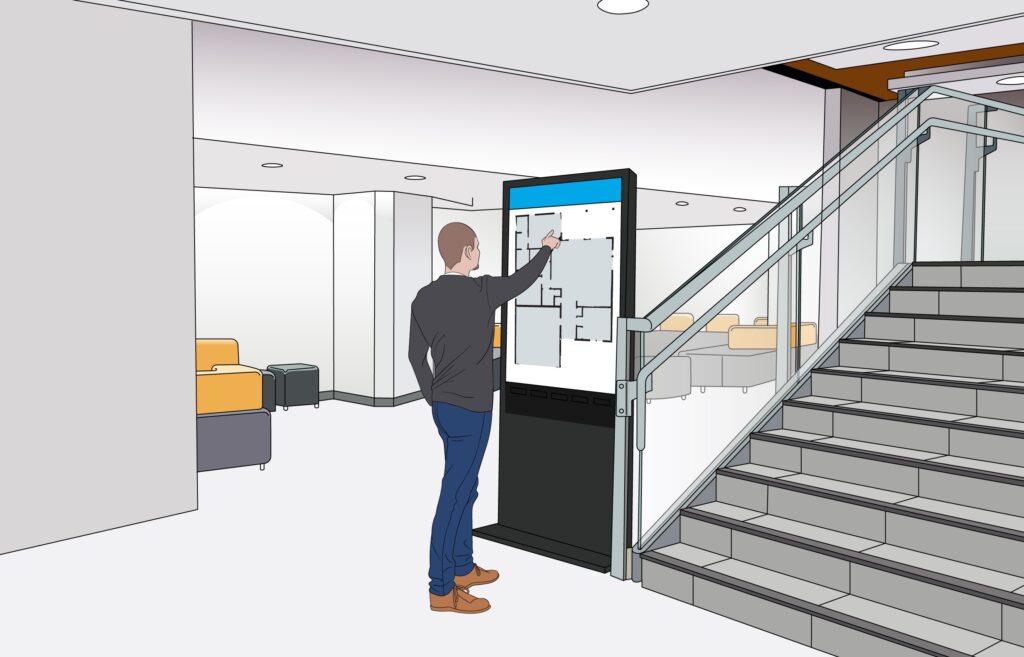Have you ever stood on the Las Vegas Strip or in New York’s Times Square with your mouth wide open, staring at all the Electronic Message Centers (EMCs) thinking, “these signs are incredible!”?
It’s a common experience for us sign professionals. You’ll notice how people’s eyes are glued to the signs as if they’re zombies. My next thought is always, “Which sign companies are landing these deals?” and “How can I start selling EMCs to my clients?”
Good questions! There are many factors to consider before diving in.
I remember selling my first EMC, which was going to be added to a pylon sign at a local retail center. At first, I felt as though I was in over my head. Managing the pylon sign involved permits, engineering, power requirements—all the usual things. But then I had to figure out how to add a double-sided EMC. For instance, where do I start? How do I explain something so technical and expensive to my clients? Let’s dig in together and figure it out!
In a recent chat with Jim Sutterfield, CEO of Signs Plus in Bellingham, Washington, he mentioned that one of the biggest trends in the sign industry is Electronic Message Centers (EMCs). Jim is seeing more and more clients asking for EMCs. This trend is growing everywhere and for all types of projects, so sign shops need to start embracing this technology or you’ll risk missing out on sales, or risk disappointing a client.
Understand what you’re selling.
To sell Electronic Message Centers, you need to know exactly what they are. Understand the key features, the best ways your clients can use them, and the different types of display technology. The important thing is to understand how the different screen options impact resolution and viewing angles, unit size options, usability of content management software, connectivity requirements, customer support, and how they can fit within existing signs. Also, keep up on local code regulations about where digital signs are allowed. This is an area where ISA can help.

There are a few technical things to understand when discussing EMCs with your clients, depending on their use case:
Viewing Distance
Optimal viewing distance is where the pixels on a sign blend together to create a clear image. Signs with closer pixel spacing are better for viewing up close. Signs with wider pixel spacing work better when viewed from farther away or at a height.
Viewing and Reading Angle
LEDs in digital signs are directional, meaning they shine light mainly straight ahead. They look brightest when viewed directly. As you move to the sides, the brightness decreases and the brightness drops to half the optimal level.
Vertical angles work similarly, but special design features help reduce light that spills away from the viewer. These angles may not be the same above and below the LED since signs are usually viewed from below.
The reading angle essentially refers to the distance your sign is optimally legible from. This angle is usually wider than the viewing angle, but can change based on lighting and the sign’s surroundings.
Who Can Benefit from Electronic Message Centers (EMCs)?
Most of your clients can benefit from EMCs. They are especially useful for retail centers, churches, restaurants, schools, universities, medical offices, and more. Unlike static signs, EMCs allow for flexible messaging, which makes them perfect for promotions, community updates and giving directions.
Make EMCs Part of Their Marketing Strategy
It’s important to help your clients understand that buying an EMC is more than adding another sign, it’s an investment in their business. I always tell clients to treat it as part of their marketing budget, not just a construction cost. Unlike traditional signs, EMCs work as an advertising tool. A few of our Behind the Signs community members chimed in on the subject.
Tony Vecchio emphasized that showing clients the return on investment (ROI) is a great way to position EMCs as a smart business investment.
“It’s especially beneficial for owners of multi-tenant spaces because they can upsell onsite advertising to potential tenants,” he said.
I often share this concept with my retail clients. Most retail properties have multi-tenant pylon or monument signs, where static panels are leased by anchor tenants for a fixed yearly fee. Imagine replacing one of those panels with an EMC. Property managers could promote smaller tenants on rotation and display ads for larger tenants for a fee. This benefits everyone, and over time, the EMC could even pay for itself—possibly even covering the cost of the entire pylon sign.
Cam Sauder shared a story from one of his clients to highlight the impact of EMCs.
“One of our clients, a deli/bakery, noticed a direct correlation between store traffic and their sign being on. During electrical work, they had to turn off the sign intermittently. The owner said he could tell if the sign was on just by looking at his store,” he said. “When the sign was on, the store was busy, and when it was off, the store was empty. While you can’t guarantee that kind of result for everyone, it’s a powerful testimonial.”
According to a study by the Small Business Association, businesses that added an EMCs experienced an average increase in sales of 15-150%. The same study also found EMCs to be 60% more effective than other forms of advertising, such as television, radio, and online ads.
EMCs grab attention and give businesses a powerful way to promote and sell their products and services. There’s no better way to make an impact!
Finding the Right Partner
Don’t panic! You don’t have to know everything to get started. There are great suppliers in the sign industry ready to help you.
To kick off your educational process, consider reaching out to a national EMC wholesale supplier. There are many options available, so contact several to ask about their training and support for you, your sales team and your customers. Typically, they can bring a unit—usually on a trailer—to your shop and provide hands-on training to help you communicate effectively with clients.
For larger sales, they often offer additional support to help you close deals and can even assist with understanding local sign code for permitting.
I’ve have worked with several suppliers over the years, including Daktronics (which focuses on larger projects), Watchfire and Optec Digital Displays. I’ve had positive experiences with all of them. We also have several excellent suppliers that are part of our Behind the Signs Community, including Wholesale Digital Signs and Surefire Signs.
When selecting the right partner, focus on two main things: how will they help you sell their products and how they will support and train your clients? Do they offer user-friendly software for you to manage your content? Also, what kind of warranty do they provide after installation? These issues are very important to understand for you to successfully offer EMCs to your clients.
Jeffrey Bouvy, President of Wholesale Digital Signs (wholesaledigitalsigns.com), enlightened me on their approach to working with sign companies. They focus on building long-term relationships and handle each quote with care. For clients unfamiliar with message centers, he asks for a site photo, address, and info about the current setup. To help with the decision, he creates a custom video showing exactly what the client will get. After the sale, they build and ship the product to either the sign company or the end user. Once installed, Jeffrey connects the sign to the cloud remotely and provides training to ensure the customer knows how to use their new display. They also offer 100% financing, so customers can start making money from day one.
Steve Johnson, Sales Manager of Surefire Signs, Inc. (surefiresignsinc.com), detailed the support they offer to sign shops selling their products. They have seven field reps who provide project quotes, follow-ups and demos. They also handle engineering and offer financing options to help shops avoid tying up cash flow. Surefire offers sales training for end users and service training for field techs. All signs are designed and assembled in the USA and meet UL standards for LED signs. After installation, their tech team trains the end users, so the sign shop can move on to the next job.

Reach out and start talking to a supply partner to build confidence in your client conversations. You won’t regret growing these valuable relationships!
How AI Transforms EMCs
Helping your clients understand how AI is changing EMCs can improve their communication. AI can personalize messages by analyzing user data on their devices and showing promotions based on shopping habits. It also allows EMCs to update content automatically, changing messages based on the time of day, weather, or current events to keep information relevant. Additionally, AI helps guide visitors to specific locations based on their personal schedules and needs.
Overall, AI makes EMCs more effective and responsive by enhancing communication and marketing. While this might seem a little invasive, it’s the future of signage.
Embrace the Future of Signage!
It’s an exciting time in the sign industry! With technology and automation advancing quickly, you have a great opportunity to help your clients succeed using Electronic Message Centers. By integrating these tools into your clients’ marketing strategies, you can grow your business while making a real impact on their success!
Joe Arenella: Sign Shop Owner turned Software Founder! With SignTracker (an Inktavo company), he’s making job tracking and sign quoting a breeze for sign shop owners everywhere. Plus, catch him on Behind the Signs Facebook Community for industry tips and free resources, as well Behind the Signs Podcast that he co-hosts with his daughter Liz Arenella Toynes, co-owner of Studio Dzo.










